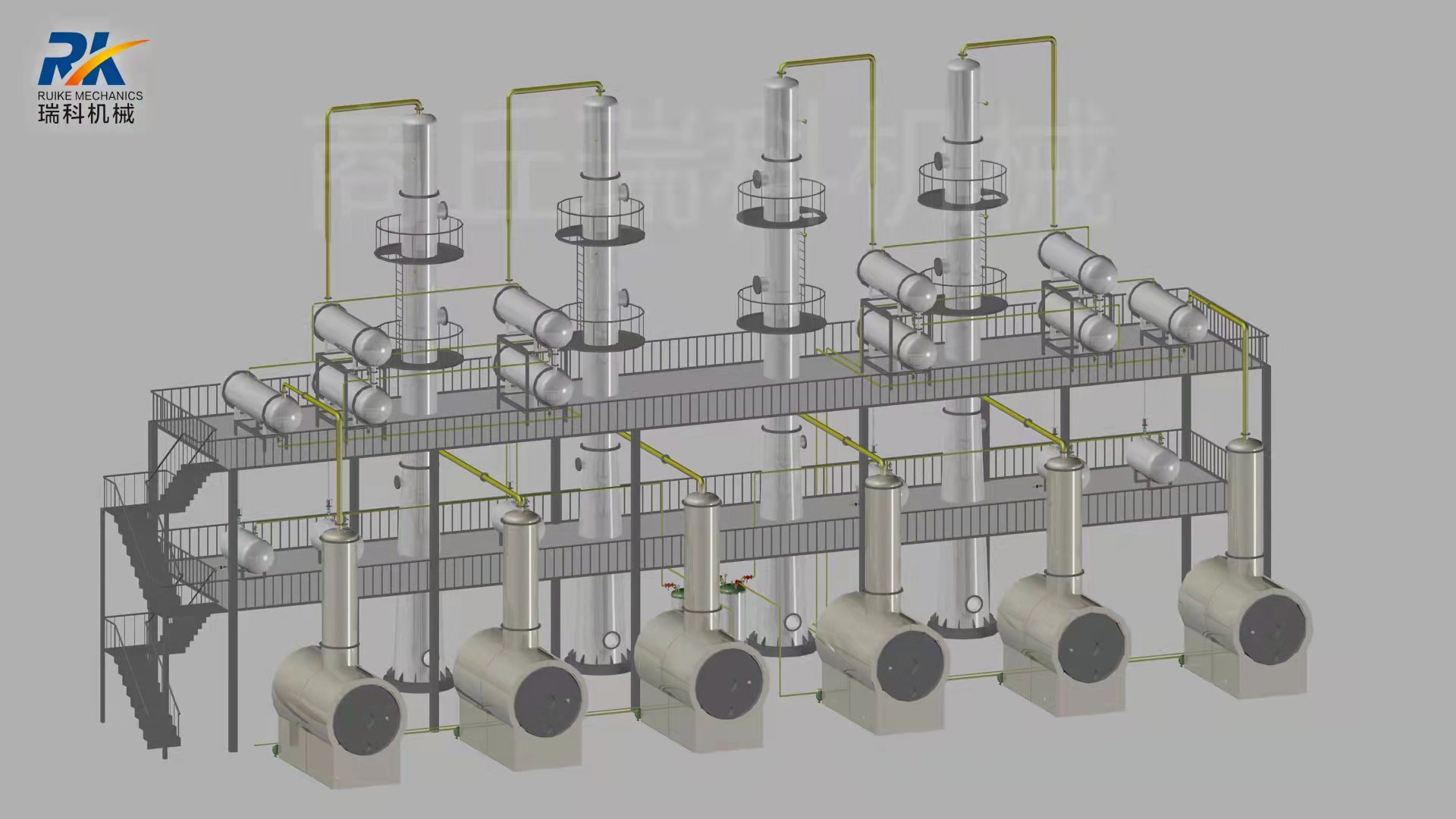
- Home
-
Pyrolysis Machine
- Pyrolysis Machine for Crude Oil 1TPD
- Pyrolysis Machine for Crude Oil 3TPD
- Pyrolysis Machine for Crude Oil 5TPD
- Pyrolysis Machine for Crude Oil 10TPD
- Pyrolysis Machine for Crude Oil 15TPD
- Pyrolysis Machine for Oil Sludge Recycling
- Pyrolysis Machine for Diesel and Gasoline 1TPD
- Pyrolysis Machine for Diesel and Gasoline 3TPD
- Pyrolysis Machine for Diesel and Gasoline 5TPD
- Pyrolysis Machine for Diesel and Gasoline 10TPD
- Pyrolysis Machine for Diesel and Gasoline 15TPD
- Distillation Equipment
- Parts
- Our Projects
- About Us
- Contact Us

kettle distillation (batch distillation) is used for small-scale refining of crude oil and waste engine oil.
Kettle distillation—also known as batch distillation—is a non‑continuous process commonly employed in petrochemical operations for small‑scale or intermittent feedstock treatment.
Kettle distillation operates on a simple principle: raw oil is loaded into a distillation vessel at once, heated to vaporize, and then different fractions are collected in stages.
This process differs significantly from large-scale petrochemical operations’ atmospheric and vacuum continuous distillation methods.
Key Applications in Petrochemical Processing This technology is primarily employed for:
- Waste motor oil regeneration
- Small-batch processing of specialty oils
- Small-capacity crude oil fractionation in remote locations
Technical Characteristics When Processing Crude Oil and Waste Motor Oil It is Simple Distillation Range
For Waste Motor Oil: Processing typically begins with settling and filtration to remove mechanical impurities. The batch distillation then separates the waste oil into base oil (heavy fraction) and fuel oil (light fraction). However, this method struggles to thoroughly remove sulfur, nitrogen, and heavy metals.
For Crude Oil: The process is suitable only for small-scale experiments or rudimentary oil refining in remote areas. It cannot achieve the efficient separation of multiple components that atmospheric-vacuum distillation provides.
Rough Product Fractions
- Separation precision is low, only roughly cutting components by boiling point into “light oil” (similar to gasoline), “heavy oil” (similar to diesel), and residue.
- Direct fire heating or jacket heating methods often lead to coking of materials at high temperatures, especially when processing high-viscosity waste oils.
Environmental and Safety Concerns
- Batch operations result in unorganized emissions of volatile organic compounds
- Small-scale facilities typically lack comprehensive environmental treatment systems
Product Quality When Using Crude Oil or Waste Motor Oil
Products from Crude Oil
Light Fraction (Initial boiling point to 200°C):
- Similar to gasoline but with low octane rating (approximately 60-70)
- Contains sulfur, olefins, and other impurities
- Not suitable for direct use as vehicle fuel
Heavy Fraction (Above 200°C):
- Similar to diesel but with low cetane number
- High sulfur content (potentially exceeding 1000ppm)
- Produces significant pollution when burned
Residue:
- Contains asphaltenes and high-boiling-point components
- Potentially usable for road paving or industrial fuel
Products from Waste Motor Oil
Light Fraction:
- Solvent oil or fuel oil (kerosene-type)
- Suitable for industrial heating or marine fuel
Heavy Fraction:
- Regenerated base oil (used for blending low-end lubricants)
- Contains incompletely decomposed additive residues
Residue:
- Asphalt-like substance
- May be used as fuel or treated as hazardous waste
Key Differences from Atmospheric-Vacuum Distillation
| Comparison Aspect | Batch Distillation | Atmospheric-Vacuum Distillation |
|---|---|---|
| Raw Material Adaptability | Waste motor oil, small batches of crude oil | Large-scale crude oil (controlled sulfur content and acidity) |
| Processing Capacity | Small (tens to hundreds of tons daily) | Large (thousands to tens of thousands of tons daily) |
| Core Equipment Differences | Simple distillation vessel + fractionating column | Atmospheric tower (30-60 theoretical plates) + vacuum tower + heating furnace |
| Separation Depth | Rough cutting only (wide boiling range) | Precise separation into narrow fractions |
| Product Quality | Does not meet vehicle fuel standards | Can directly produce gasoline and diesel meeting national standards |
| Environmental Compliance | Prone to waste gas and residue pollution | Equipped with desulfurization, denitrification, and wastewater treatment systems |
Process Flow Comparison
| Comparison Aspect | Batch Distillation (Intermittent) | Atmospheric-Vacuum Distillation (Continuous) |
|---|---|---|
| Process Continuity | Batch operation requiring refeeding and reheating | Continuous feed into the heating furnace and towers, 24-hour operation |
| Separation Principle | Simple vaporization-condensation | Multiple mass transfers between gas and liquid phases in towers |
| Automation Level | Manual temperature control and fraction switching | Automated DCS system for temperature, pressure, and flow regulation |
| Typical Cycle | 12-48 hours per batch | Continuous operation, stopping only for maintenance |
While batch distillation can achieve preliminary separation of materials, its low efficiency, pollution issues, and inferior product quality have led the modern petrochemical industry to adopt continuous, intelligent processes like atmospheric-vacuum distillation. These advanced methods ensure more efficient resource utilization and environmentally friendly production.
Understanding these differences is crucial for selecting the appropriate distillation technology for your specific processing needs, whether you’re handling waste oils or processing crude oil in limited quantities.
Ask for tailored Solution
we take a personalized approach to provide tailored solutions that align perfectly with your specific requirements.